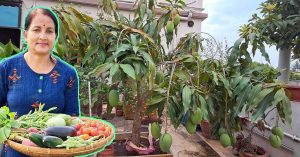Have a Slanted Terrace? You Can Still Set Up a Garden With This Engineer’s Idea
Kerala resident and retired engineer T K Sajeevan expanded his home garden to his terrace, despite having a slanting roof. Here’s how he did it, and you can too.
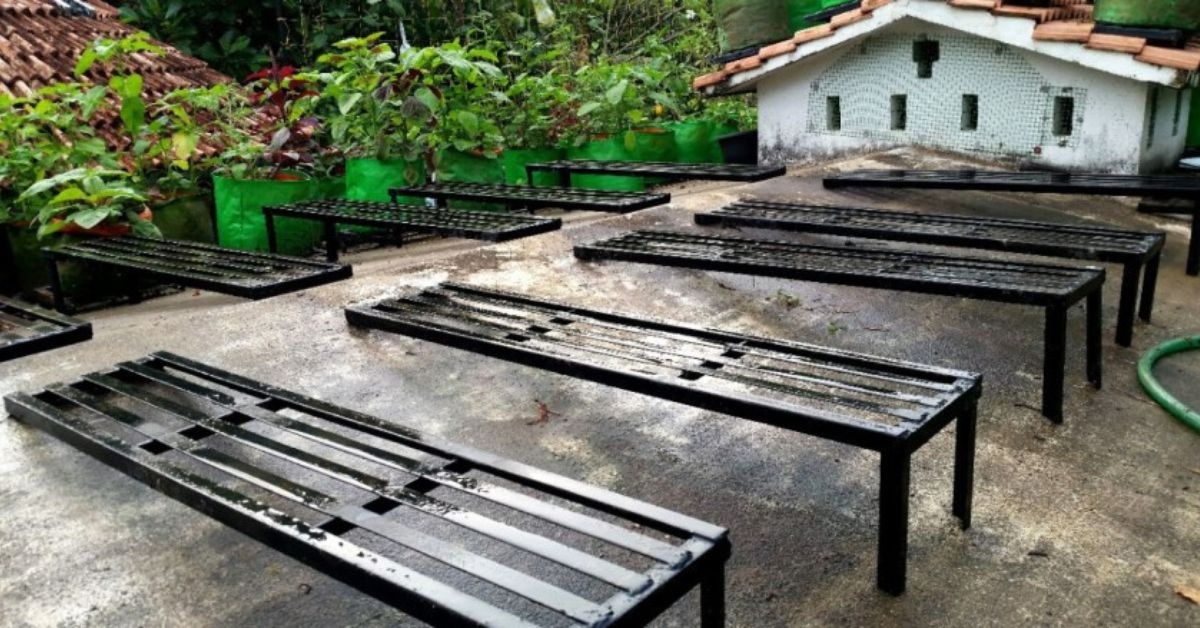
Ten years ago, Vypin (Kochi) born T K Sajeevan noted that the quantity of produce from his organic vegetable garden had drastically reduced.
This, he realised, was because the trees he had planted here had grown so much that they were now restricting the flow of adequate sunlight. The solution would be to set up a similar garden on his terrace, he thought, where there would be plenty of sunlight available.
But that’s where the actual problem lay. Sajeevan’s house has a slanted terrace, so keeping bags or pots there would be difficult. Unwilling to give up, the former engineer started thinking of how he could modify his terrace to house the plants.
The idea was to build a stand according to the slope of the terrace and place the pots on it.
First, he drew a basic design of the stand, which would have two pairs of legs, both of different lengths. He then measured the slope of his terrace and decided the length of the stand legs based on that. His idea was to place one grow bag or pot on each stand, but later, he welded three together to make elongated ones and reduce costs incurred.
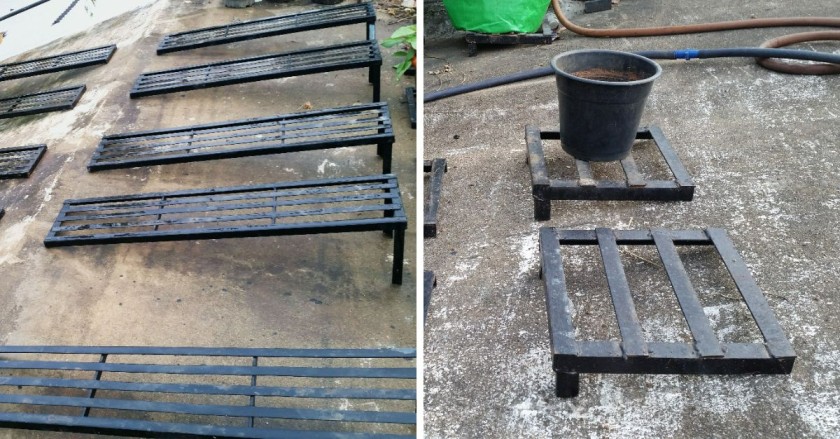
He took help from a nearby metal workshop worker to weld the stand. The worker cross checked the measurements and built one stand on a trial basis, using a mild steel (MS) pipe. A single stand comes in a square shape of 8 inches each. It fits perfectly for a grow bag and can even hold the weight of an adult, Sanjeevan says. In case of triple stands, the length and breadth would be one metre and 8 inches (21 cm) respectively.
Today, Sajeevan’s terrace has 100 stands built for a price of less than Rs 7,000. “This was 10 years ago. The cost of materials and labour charge has shot up now. Even then, it won’t cost more than Rs 15,000 for 100 single stands now,” says the 63-year-old.
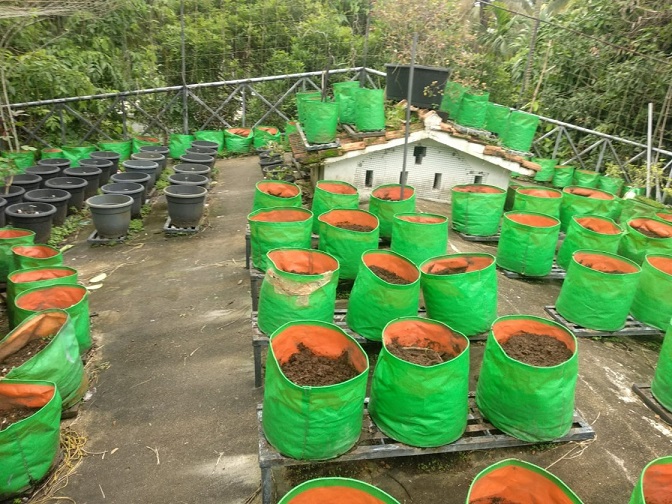
A flourishing garden
Sajeevan is a retired engineer who worked for corporations in Thrissur and Ernakulam. Vegetable farming has been his favourite pastime for over 30 years and the family mostly use the produce from their own garden. Excess harvest is sold in the nearby store or distributed among family and friends.
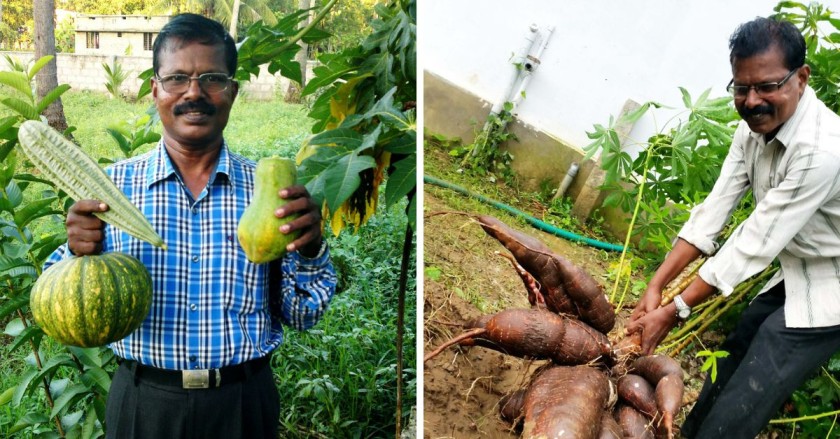
“I grow mostly seasonal vegetables. This includes brinjal, ladies’ finger, tomato, corn, drumstick, beans, peas, pumpkin, ash gourd, spinach, capsicum, different types and colours of chilli, and more. I also grow passion fruit, mango, and lemon,” he adds. “There are over 150 grow bags on my terrace now.”
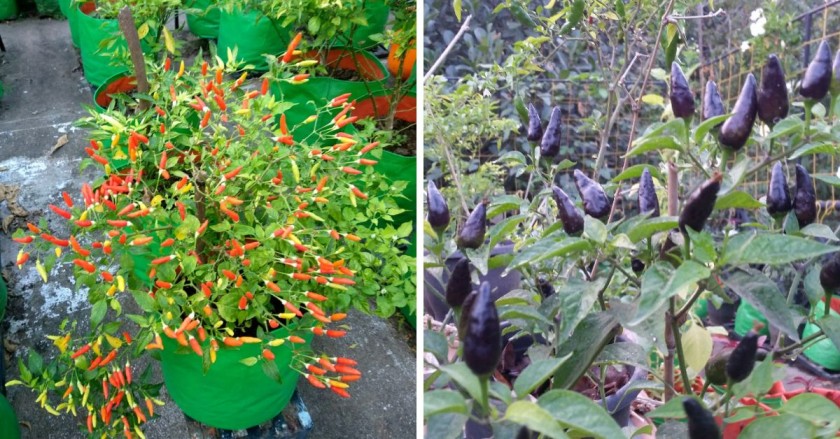
The sexagenarian also says that over the past 10 years, several people have visited his terrace to see the idea and some of them have set up similar stands.
If you plan to set up grow bag stands on your slanted terrace, here are some tips from Sajeevan:
- Share the idea with someone who is experienced in metal and welding work and seek their help.
- Decide how many stands you need based on the number of grow bags or pots to be placed.
- Try square pipe instead of MS pipe, which lasts longer and is more cost-effective.
- Earthen or cement pots can also be placed on the stand.
- As the stands are placed where there is direct exposure to sun and rain, remember to paint them occasionally to avoid rusting.
- Fix the size of the stand on the basis of the diameter of the pots.
- Check the availability of space and build stands accordingly to hold multiple pots. This can help save material and labour costs.
- Remember that one pair of legs will be longer than the opposite pair. The difference between the legs of both sides must be the slope of the terrace.
- Take extra care while checking the plants placed on a slanted terrace.
- Remember that change in material, size, and number will change the total cost.
Edited by Divya Sethu
All photo credits: K T Sajeevan
If you found our stories insightful, informative, or even just enjoyable, we invite you to consider making a voluntary payment to support the work we do at The Better India. Your contribution helps us continue producing quality content that educates, inspires, and drives positive change. Choose one of the payment options below for your contribution- By paying for the stories you value, you directly contribute to sustaining our efforts focused on making a difference in the world. Together, let’s ensure that impactful stories continue to be told and shared, enriching lives and communities alike. Thank you for your support. Here are some frequently asked questions you might find helpful to know why you are contributing?

This story made me
-
97
-
121
-
89
-
167




